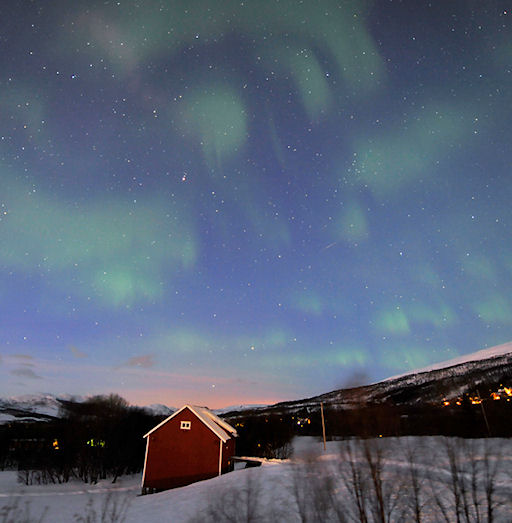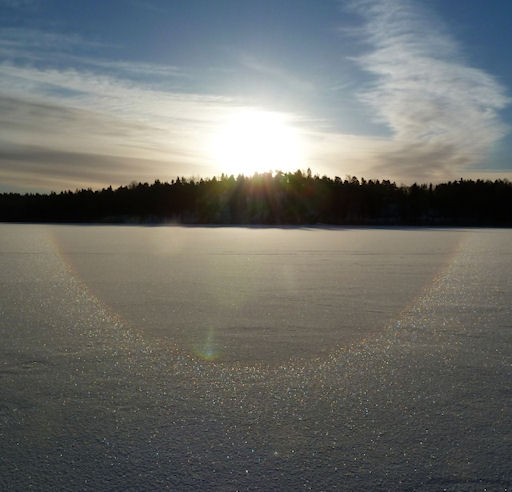Metallic photos of the sun by renowned photographer Greg Piepol bring together the best of art and science. Buy one or a whole set. They make a stellar gift. | | |
SUNSET SKY SHOW: When the sun goes down tonight, step outside and look west. Jupiter is in conjunction with the crescent Moon. Try to catch them before the sky fades to black. A bright conjunction framed by twilight-blue is a super sight! [sky map]
NASA SEES THE ENTIRE SUN: On Super Sun-day, for the first time ever, NASA's STEREO spacecraft moved into position to photograph the entire sun--front and back. Researchers say this is a transforming moment in solar physics that could lead to big advances in space weather forecasting. Get the full story from Science@NASA.
PULSATING AURORAS: During the geomagnetic storm of Feb. 4th, Fredrik Broms of Kvaløya, Norway, witnessed an episode of elusive pulsating auroras. "The sky was filled with patches of green that oscillated in brightness," he explains. A snapshot with his Nikon D3 caught the phenomenon in mid-pulse:

Photo details: Nikon D3, AF-S Nikkor 14-24 mm f/2,8, 10 sec, ISO 1000
"The patches didn't move much, but their intensity changed. When one patch got brighter another became more diffuse and so on," Broms describes.
Reports of pulsating auroras go back more than a century, but until recently no one knew what made the aurora borealis behave like a strobe light. Researchers from UCLA solved the puzzle in 2009-10. Using data from NASA's THEMIS spacecraft, they discovered that auroras pulse in sync to 'chorus waves' in Earth's magnetosphere. This is a type of plasma wave that seems to be able to modulate the flow of solar wind particles down to Earth during geomagnetic storms. Clearly, the chorus was singing on Feb. 4th.
February 2011 Aurora Photo Gallery
[previous Februaries: 2010, 2009, 2008, 2007, 2006, 2004, 2003, 2002]
GROUND HALO: On Jan. 23rd, Gote Flodqvist was skiing across a lake near Stockholm, Sweden, when he noticed something following him. "There was a halo, very colorful, shining up from the surface of the lake," he says. "It went everywhere I did!" That made it remarkably easy to photograph:

Halos like this usually appear in the sky. Atmospheric optics expert Les Cowley explains the difference: "This is a ground halo, the sky’s familiar 22 degree halo in an unfamiliar guise. It is made by sunlight shining on hexagonal prism ice crystals tumbled randomly onto the lake's frozen surface. To the eye it is circular like its sky counterpart but the path across the lake of the crystals making it is quite different – it is a hyperbola like the paths of some comets."
Readers who find themselves on on icy lakes or snowy fields should be alert for this phenomenon--and submit the pictures here.

